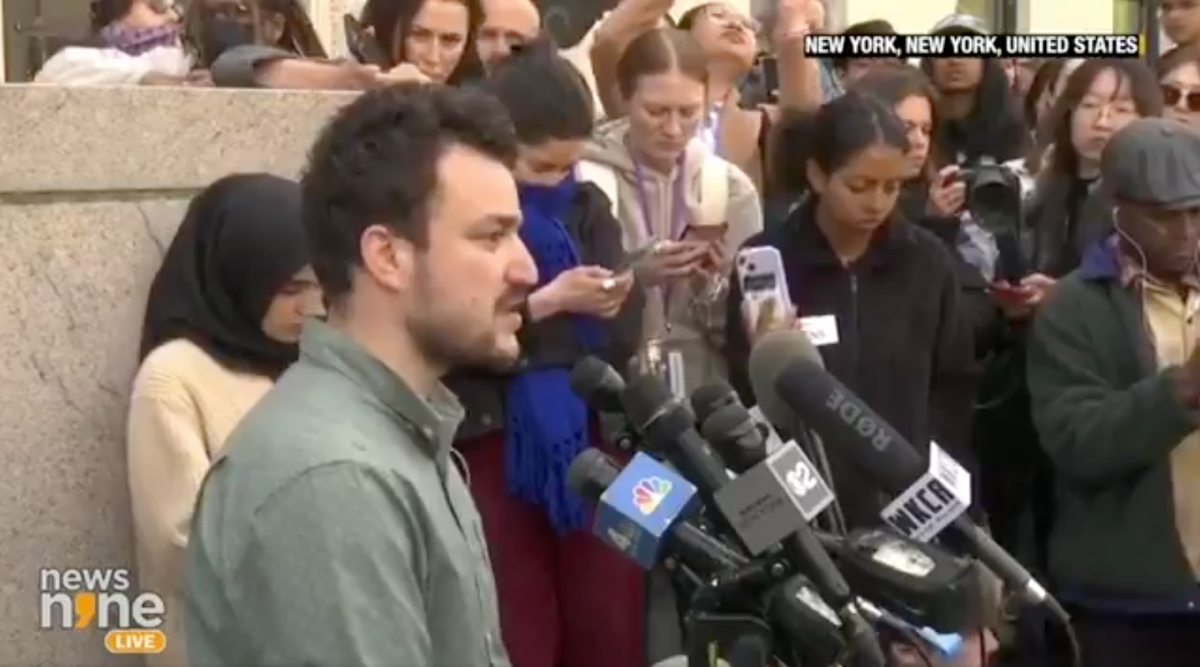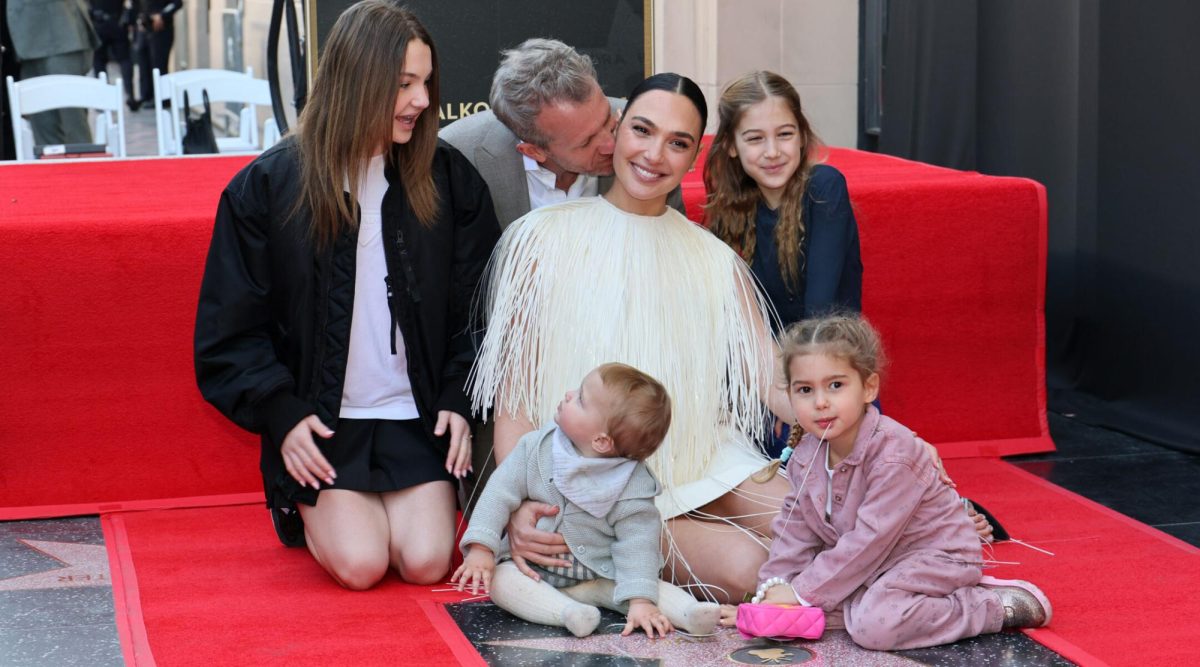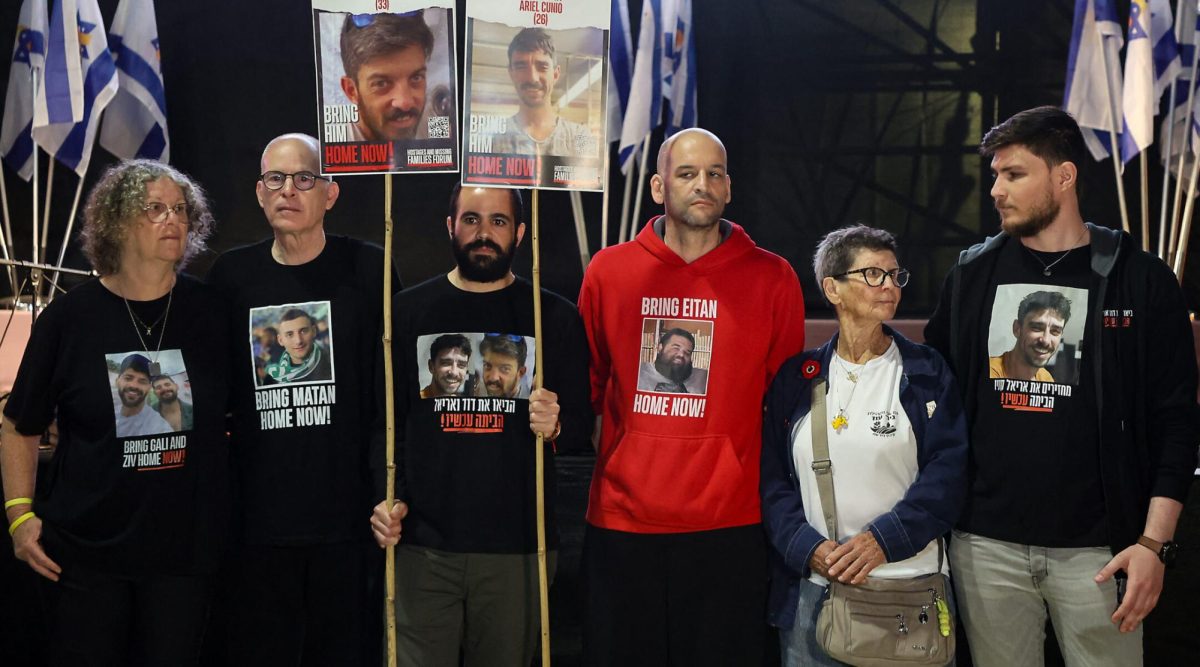The new banners hanging outside a public building in Chapel Hill, North Carolina, channeled the college town’s history of progressive activism.
One depicted a member of the Chapel Hill Nine, Black activists whose 1960 sit-in at a local lunch counter kicked off protests in favor of racial integration. Another showed a raised fist. A third portrayed a college graduate, clad in the trademark blue of the University of North Carolina, under the words “Good Trouble” — a reference to the famous call to action against injustice from the civil rights hero John Lewis.
For some locals, though, the most eye-catching element of the display, installed earlier this month at Chapel Hill’s Peace and Justice Plaza, was a patch of black-and-white squares drawn over the graduation gown. They recognized it immediately as a keffiyeh, a traditional Palestinian headscarf that has been adopted by protesters on the left, and they saw it as a threat.
“This banner, supporting the student protests, is essentially equating Good Trouble with support for Hamas terrorists going on a murderous rampage, torturing, gang raping, and murdering men, women, and children in their homes in grisly fashion,” Kathy Kaufman, a member of a local Reconstructionist synagogue, wrote to the city.
To Kaufman, who chairs Kehillah Synagogue’s social action committee, and to others in town, the presence of the keffiyeh together with the UNC colors sent a clear message. The banner, and by extent the city, seemed to be endorsing the pro-Palestinian student protesters from the past year. According to Kaufman, some of those “vociferous” protesters began lobbying against Israel in the days after Hamas’ Oct. 7, 2023, attack on Israel; some, she said, openly supported Hamas.
A Chapel Hill native, Keith Siegel, was taken hostage on Oct. 7 and remains held by Hamas.
Kaufman and others in town mounted a letter-writing and advocacy campaign with a single goal.
“What we’re asking is that the banner be taken down,” Kaufman said in an interview on Tuesday. “It’s insulting to us.”
The next day, Chapel Hill acceded to their requests, taking all three banners down. “While I strongly feel that public art should be thought-provoking, I don’t believe it should cause harm,” Chris Blue, the town manager, said in a statement. “And right now, this piece is causing harm.”
The banner brouhaha in Chapel Hill adds to a growing number of instances where the presence of keffiyehs has elicited a sharp reaction from Jews who see them on TV, in grocery stores and on the streets. The keffiyeh’s increasing ubiquitousness has turned up the heat on a simmering cultural debate: More than a year after Oct. 7, should Jews feel threatened by the sight of a person wearing one?
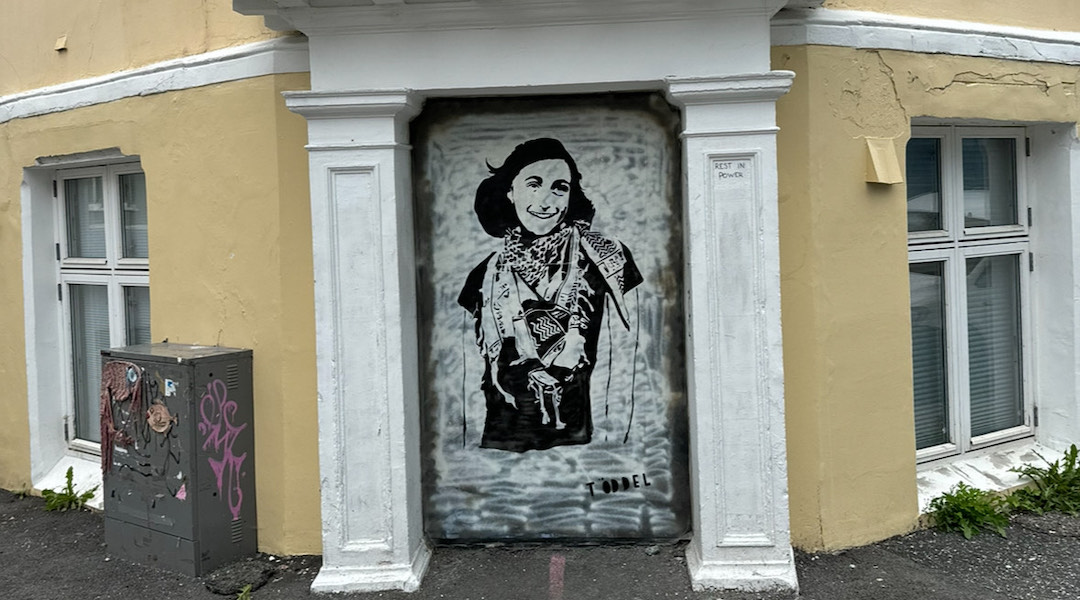
For the Anti-Defamation League — which monitors antisemitism and anti-Israel activity, and maintains that opposition to Israel’s existence is antisemitic — the answer is: not necessarily. “Keffiyehs are not a hate symbol and the presence of keffiyehs has no bearing on whether something is classified as an antisemitic incident,” the group said in a statement.
But many Jews say they experience the garment as an unmistakable sign of the wearer’s antipathy toward Israel and anyone who supports it — attitudes that have accompanied a spike in antisemitic incidents since the start of the Israel-Hamas war.
“It creates this sense of wariness, and for some people, the sense that they are in danger,” said Manya Marcus, a Jewish psychotherapist in Chicago and host of the podcast “What Came After,” about the aftermath of Oct. 7.
The clothing item itself has a long history among both Jews and Arabs, with origins in biblical times. Early Zionist settlers including Chaim Weizmann wore the keffiyeh in an effort to blend in with their new Arab neighbors, according to the National Library of Israel. The keffiyeh became explicitly associated with pro-Palestinian movements when Yasser Arafat, head of the Palestine Liberation Organization, began consistently donning it in public in the 1960s and 1970s. Yet for decades following, according to Israeli fashion historian Einav Rabinovitch-Fox, many Jewish Israelis continued to wear them.
Before Oct. 7, the sight of non-Muslims wearing the keffiyeh was decried more often than it was celebrated. In 2021, CAIR lambasted the fashion designer Louis Vuitton for selling a scarf that resembled, and was named after, a keffiyeh, accusing the company of appropriation. Before then, in 2008, Dunkin’ Donuts pulled an ad campaign that featured celebrity chef Rachel Ray after conservative pundits complained that Ray appeared to be wearing a keffiyeh.
Everything changed after Oct. 7, as pro-Palestinian protests swept the globe. Many Muslim groups now encourage allies to don the keffiyeh, and an untold number of people have done so, buying keffiyehs from Amazon and elsewhere to wear to protests and in their daily life.
“If you’d asked me two years ago, I wouldn’t have such a negative reaction,” said Kaufman in Chapel Hill. “I associate it with the Palestinian movement, but I wouldn’t have reacted, necessarily, the way I did.”
Since Oct. 7, some conservative commentators have compared progressive members of Congress to Nazis for wearing keffiyehs; three staffers at New York’s Noguchi Museum said they were fired in September for wearing keffiyehs to work; and a singer in Toronto received backlash for performing “The Star-Spangled Banner” at a National Hockey League game while wearing a sweater that resembled a keffiyeh. (A couple months earlier the signer, Kiana Ledé, had reportedly disinvited “Zionist” fans from her concerts.)
In Georgia, a public school equity coordinator who had previously faced an investigation over his commentary on the Israel-Hamas war invited further scrutiny when he wore a keffiyeh on the one-year anniversary of the attacks.
Marcus summarized how Jews in her circle often look askance at someone wearing a keffiyeh: “Is this a fad, or are you very well aware that this is a garment that was worn by people who raped, brutalized, beheaded, butchered people like me?”
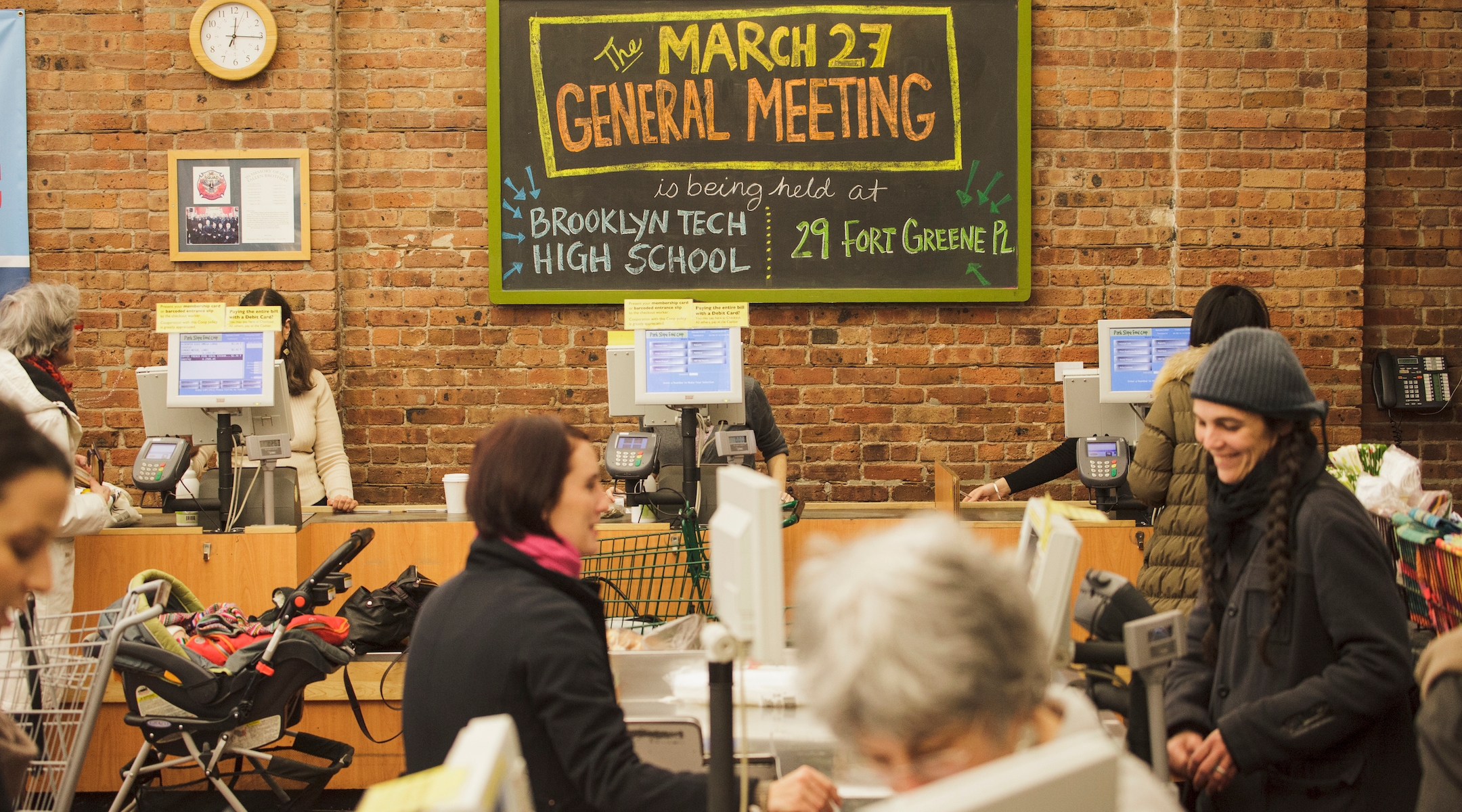
For some Jews, the question comes with an unambiguous answer. Over the summer, Eleanora Kogan, a Jewish longtime member of the Park Slope Food Co-op in Brooklyn, was working a volunteer shift at the co-op’s checkout counter when, she said, people wearing keffiyehs approached her. The sight immediately terrified her.
“I just completely went into panic mode, like a panic attack,” Kogan told JTA. “My hands started shaking, I had trouble breathing. I felt like I was going to start crying.” She told the people she couldn’t help them and left her post, unable to even look them in the eye. Her supervisors became angry, and the incident — which resulted in her being booted from her shift — is now part of a growing legal battle between the co-op and some of its Jewish members who are pressing harassment complaints against staff and management.
Recalling the incident months later, Kogan surmised, “Obviously I was triggered.” She added that, as far as she was concerned, there was nothing else the keffiyeh can stand for except “a symbol of terror” and said she had reacted to “the obscenity of somebody shoving a keffiyeh in my face, as a Jew.”
The co-op wasn’t the only place where Kogan felt herself having visceral reactions to the sight of a keffiyeh. At a diner in upstate New York, she recalled feeling like she had to move tables after a family wearing keffiyehs entered and sat near her. “I just wanted to vomit,” she recalled. “I was so upset. … I thought, ‘I can’t go through life feeling like this.’”
Last month The Weather Channel also became engulfed in the keffiyeh culture wars. Following pushback from watchdog social media account StopAntisemitism, the cable channel pulled a subway ad showing a picture of a young woman wearing a keffiyeh. On X, StopAntisemitism had declared the garment “a symbol now associated with violence against Jews post 10/7.”
In a subsequent apology, the channel said the ad had been a “mistake” and added, “We certainly don’t support or condone any form of antisemitism.” (The Weather Group, the channel’s parent company, did not return a request for comment.)
The ADL has experienced keffiyeh whiplash of its own. CEO Jonathan Greenblatt drew fire after he seemed to compare wearing a keffiyeh to wearing a swastika armband during an MSNBC appearance this spring.
“People who say, ‘Death to Zionists, I wish for that and worse’ — if you wouldn’t tolerate it if someone’s wearing a swastika on their arm, I’m sorry, you shouldn’t tolerate it if they’re wearing a keffiyeh,” he said on the cable news show “Morning Joe” in April.
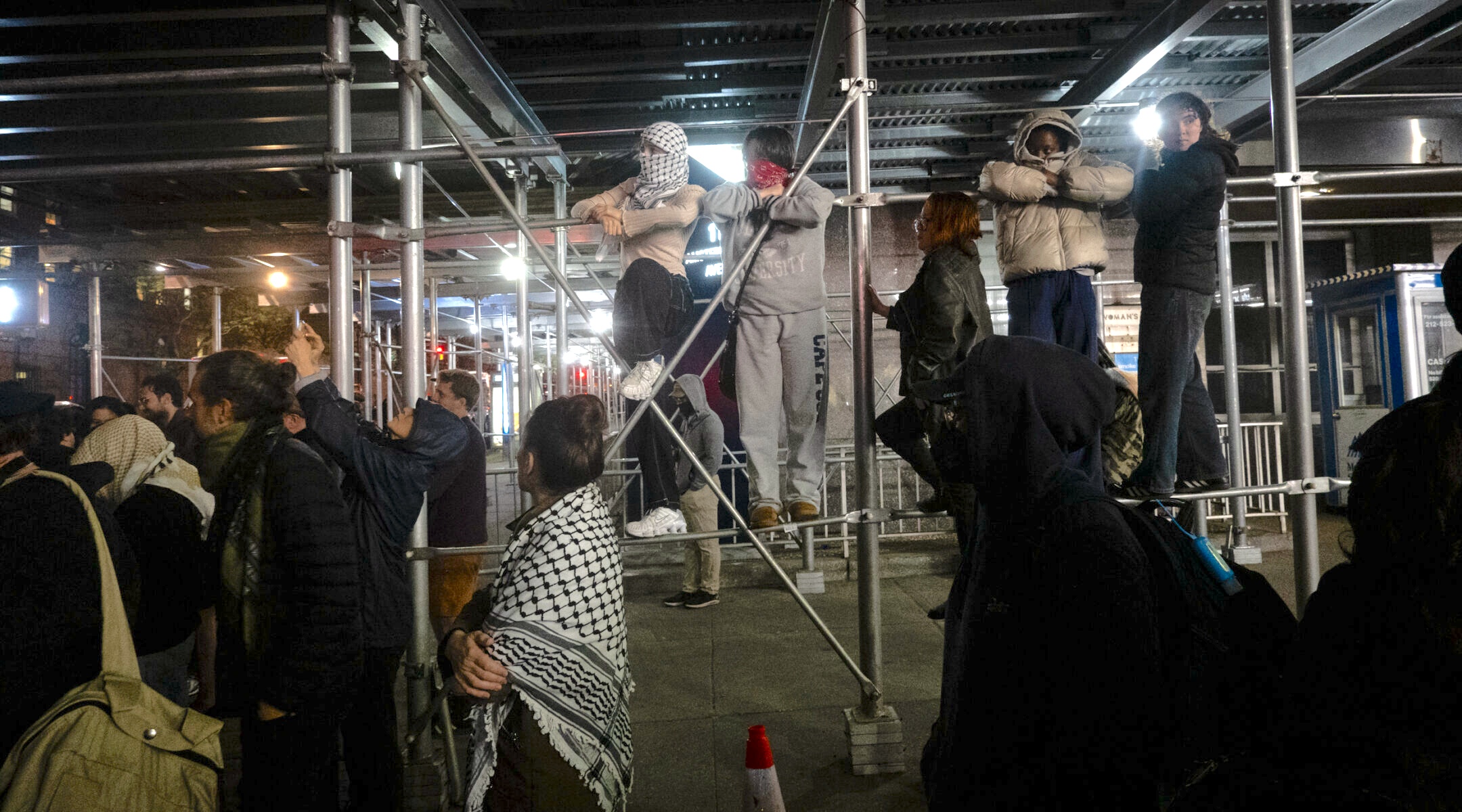
His remarks at the time — a clip of which circulated online with the “death to Zionists” part edited out — prompted widespread anger from Muslim and Palestinian solidarity groups who accused Greenblatt of demonizing the keffiyeh. Dozens of Muslim affinity groups signed onto an open letter condemning Greenblatt’s remarks and calling for his firing.
Keffiyeh wearers, the groups insisted, were not the perpetrators of violent actions, but the victims of them.
“Hate crimes and acts of discrimination against Palestinian-Americans have risen dramatically in recent months. This includes numerous attacks sparked by the public display of the keffiyeh,” the groups, led by the Council on American-Islamic Relations, asserted. “The rhetoric that Mr. Greenblatt and other extreme supporters of the Israeli government have used to smear Palestinian human rights advocates has contributed to this ongoing surge in hate.”
Greenblatt responded by saying his remarks had been taken out of context and that he merely meant to communicate that hate speech should be classified as such even when its speaker is wearing a keffiyeh.
“I don’t believe that the keffiyeh is a hate symbol,” he told the Forward at the time. “Clearly, it’s a cultural symbol with tremendous resonance for people in the Middle East. It’s not a symbol of hate.” A few months earlier, during a speech at Brown University, he had expressed empathy for a Palestinian student who had been shot in Vermont while he wearing the article of clothing. (The shooting targeted three students who attended different schools, two of whom were wearing keffiyehs.)
“My Zionism compels me to mourn a Brown student shot in Burlington because he’s wearing a keffiyeh,” Greenblatt told the crowd, according to the Brown Daily Herald. Protesters wearing keffiyehs staged demonstrations against his speech.
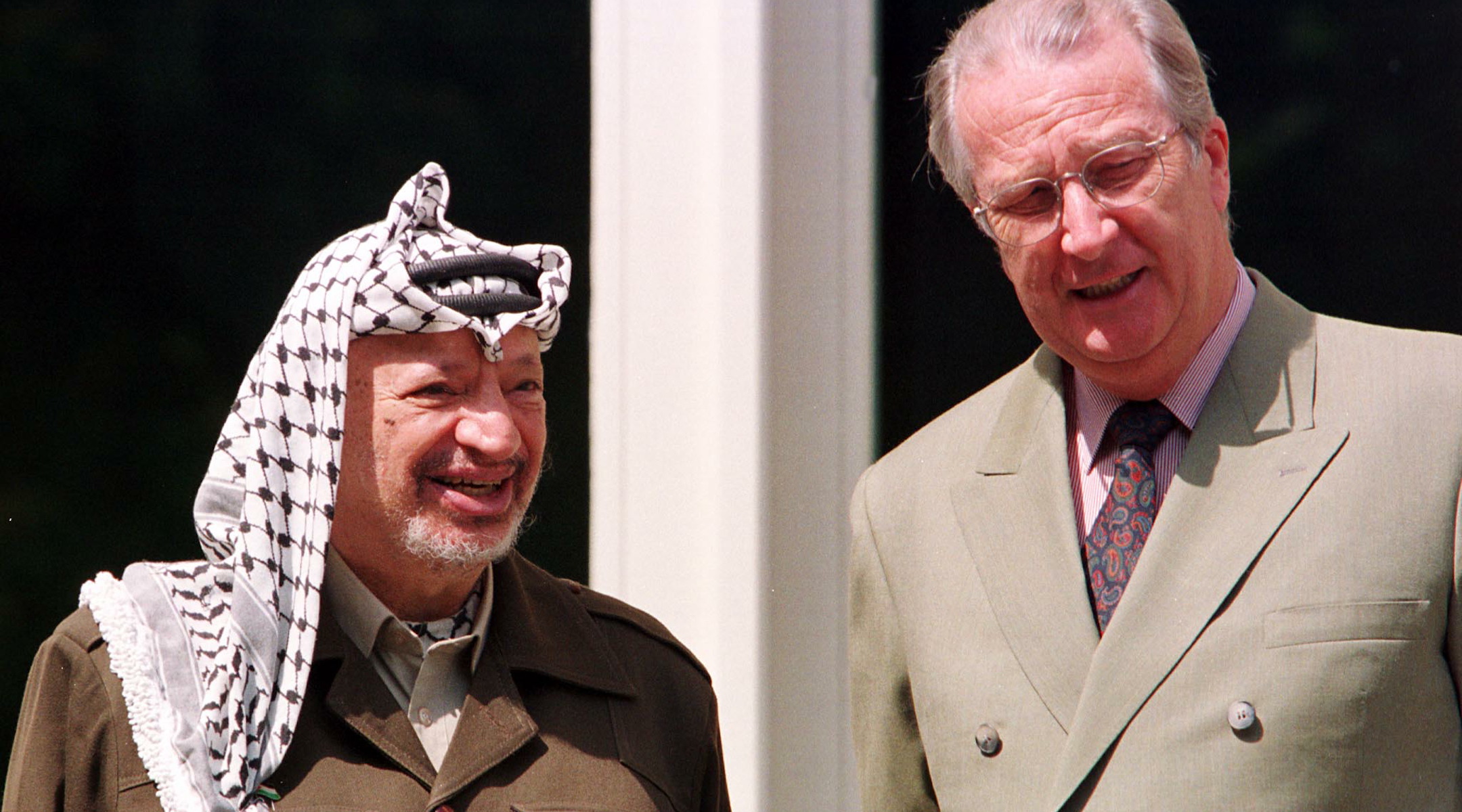
For Rabinovitch-Fox, a professor at Case Western Reserve University, the rise of the keffiyeh is testament to the ease of fast fashion protest. She said she recalled wearing a keffiyeh while growing up in Israel and doesn’t see it as supporting violence the way that, say, a Hamas flag at a protest would. But she also said she understood why American Jews would feel “triggered” by seeing keffiyehs given how widely the American left adopted it as a symbol over the last year.
“The power of fashion is that it’s really an easy way to show support or show your politics. And it doesn’t take a lot. You just wear it like it’s a scarf,” she said.
Some of the new keffiyeh-wearers include Jews seeking to challenge support for Israel in their own communities. According to a recent investigation published by the left-wing magazine In These Times, two staffers at an early education center run by Mishkan Chicago, a progressive Jewish congregation, said they were disciplined after wearing keffiyehs to work. They later resigned from their jobs.
In June, two teachers who had just left positions at the Abraham Joshua Heschel School in New York City, a Jewish day school, posted a selfie with a keffiyeh, along with the caption “This is our coming out. #FreePaletine [sic].” The post prompted an email message from the head of school, who wrote, “I am saddened and infuriated that they chose to exit our community in this hateful and disrespectful way.”
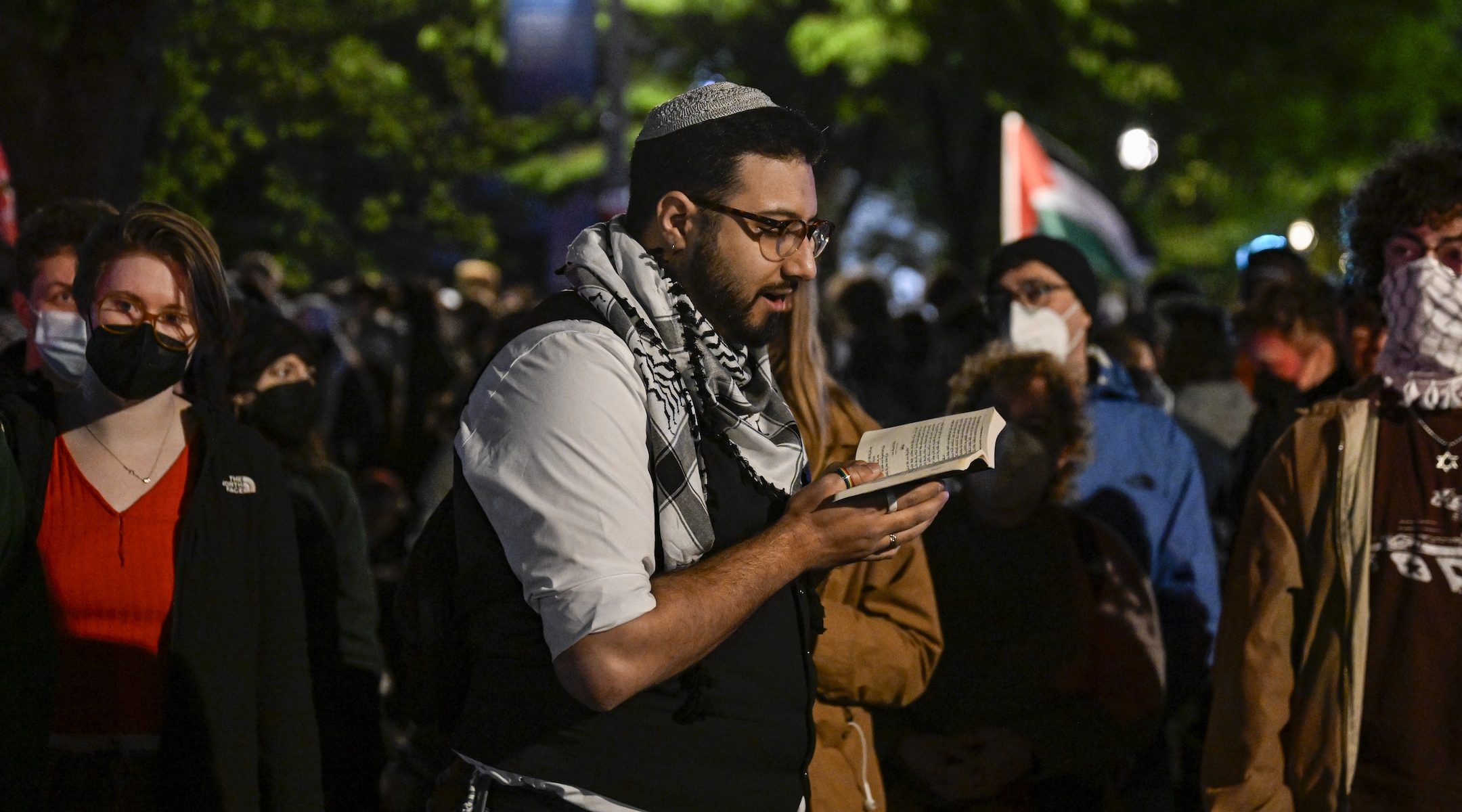
That type of drama points to the increasingly common sight of left-wing Jewish activists adopting the garment as a show of solidarity with Palestinians. At college encampments, klezmer concerts, and protests by groups like Rabbis For Ceasefire since Oct. 7, it has not been uncommon to spy crowds of mostly young Jews sporting keffiyehs along with a matching kippah or tallit.
“When Zionist Jews see anti-Zionist Jews like that, that punches a bigger hole in their rhetoric than seeing an anti-Zionist person in a hijab,” said Rifka Handelman, a Jewish anti-Zionist student activist at the University of Maryland who often dons the keffiyeh. They added that the keffiyeh “is very warm and comfy.”
To some Jews, the symbol can feel like more than a rhetorical threat. In August, a Jewish activist group in New York tried to pressure the city’s public school system to ban keffiyehs, arguing they “are not merely cultural garments, they have been adopted as symbols in response to the slaughter of Jews on Oct. 7.”
Many of Marcus’s friends and neighbors, she said, often express a desire to involve law enforcement or other disciplinary measures when they see someone wearing a keffiyeh.
Yet she cautioned that these kinds of outsized reactions could backfire, helping to create an impression of an overly sensitive Jewish community that can’t tell the difference between free expression and a physical threat.
“It becomes mangled,” Marcus said. “What is HR supposed to do with this? What system is there in this country, in this world, where we can call the cops on a shawl?”
Debates like these point to larger Jewish anxiety over navigating the uneasy post-Oct. 7 world of symbols and slogans. “I don’t think a keffiyeh announces that its wearer wants Jews dead. At least the rational part of my brain doesn’t think this,” Phoebe Maltz Bovy, an editor at the Canadian Jewish News, wrote earlier this year. “That said, am I about to make social plans with someone who isn’t even Palestinian, whose reaction to this war is to buy a scarf in support of their preferred team? I think we all know the answer.”
Back in Chapel Hill, Kaufman said she was “grateful” to the city for its decision to remove the keffiyeh banner. “I think it was a good way to handle things in the end,” she said. She also insists her bonafides as a progressive Jew haven’t changed.
“There’s a balance between the tikkun olam, repair the world, in your community and the need to focus on the Jewish world,” she said. “I sort of had a bit of an awakening in the last few years about whether I’ve been pretty neglectful of my own community, which I just assumed, erroneously, was OK. But in fact, we’re not.”
As the war drags on and pro-Palestinian activism remains widespread, Jews will have to continue to negotiate their relationship to the keffiyeh. After her incident in the diner, Kogan has tried to approach the garment with a new attitude.
“I simply have a different mindset now,” she told JTA. “So now, I’m just going to walk past. I see somebody wearing it and I’m going to look the other way. I’m just like, ‘You do you, bless you.’ My mind is much more at peace.”
—
The post Jews struggle with how to react to seeing keffiyehs in public appeared first on Jewish Telegraphic Agency.







